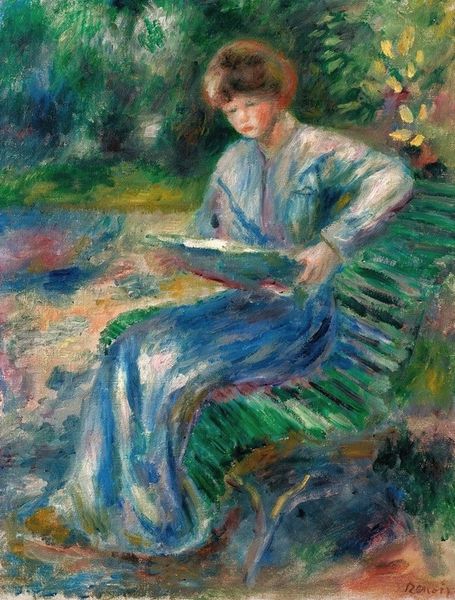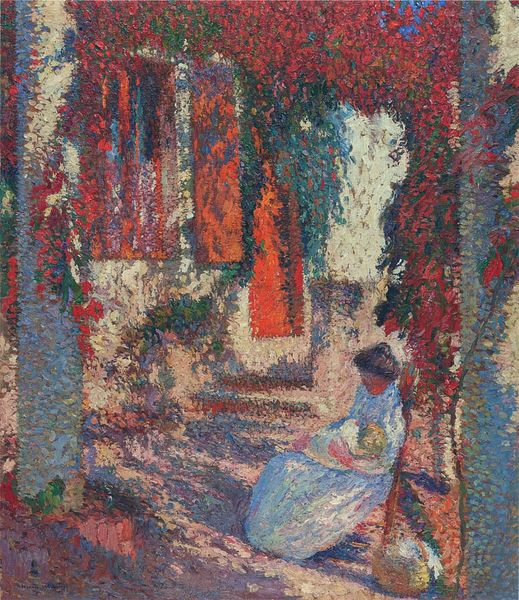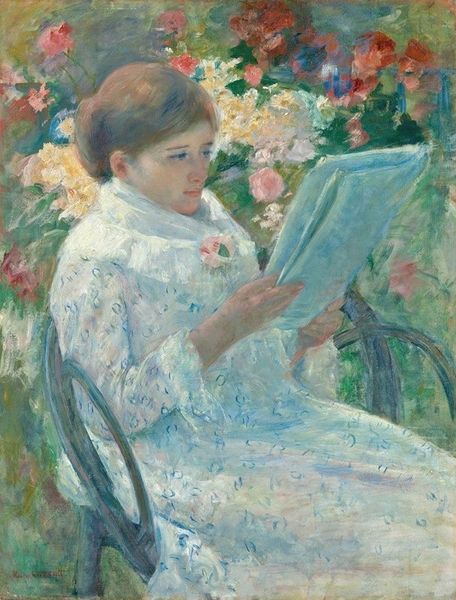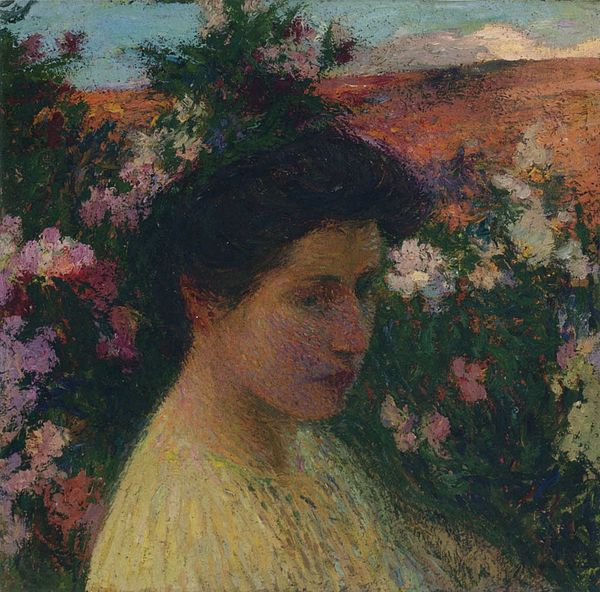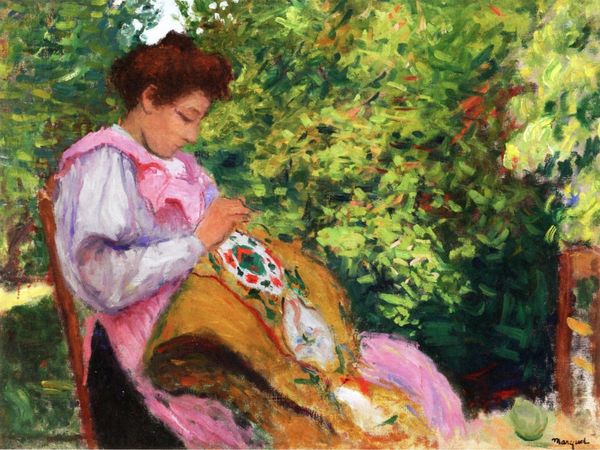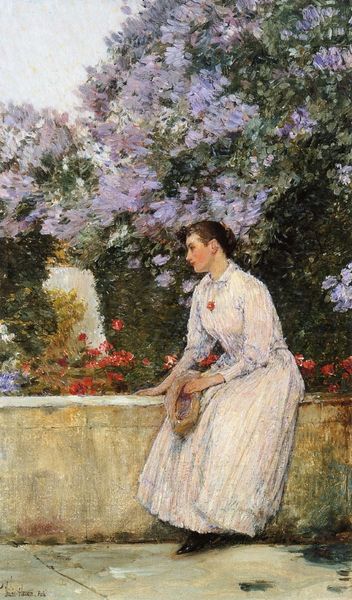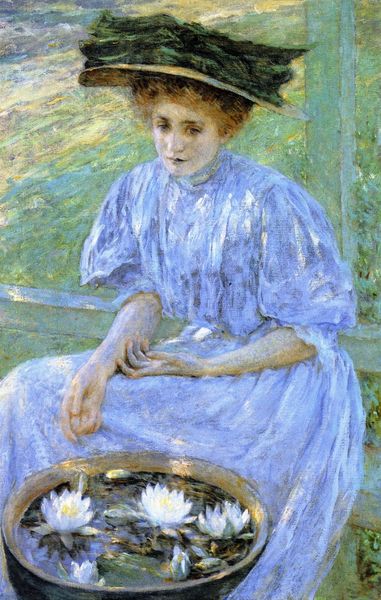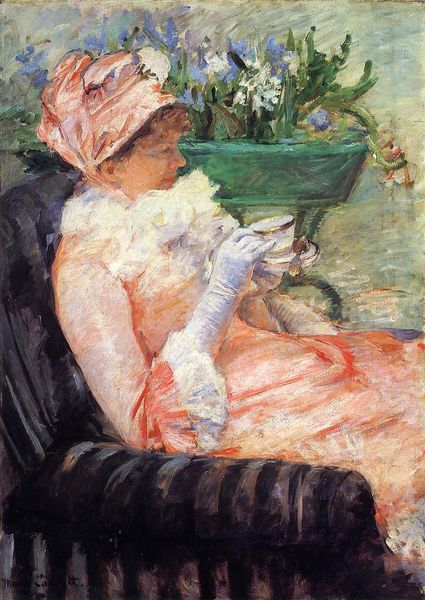
painting, oil-paint
#
portrait
#
painting
#
impressionism
#
oil-paint
#
landscape
#
impressionist landscape
#
oil painting
#
genre-painting
Copyright: Public domain
Pierre-Auguste Renoir’s painting of Madame Chocquet was made with oil on canvas, seemingly traditional materials for the time. But what Renoir does with them is remarkable. Renoir worked wet-on-wet, applying successive layers of paint before the earlier ones had dried. This technique, known as alla prima, allowed for the blending of colors directly on the canvas, giving the work a soft, luminous quality. The paint is applied in loose, visible strokes, creating a sense of movement and immediacy. Look at the way the light plays across Madame Chocquet's dress. The visible brushwork speaks to a shift away from academic polish, towards the direct expression of sensation. This mirrors the changing social landscape, a move away from the old hierarchies. The painting is less a portrait of a specific individual than an impression of a moment, and a nod to the growing leisure of the bourgeoisie. Understanding Renoir's methods allows us to appreciate how deeply his art was tied to broader changes in society.
Comments
No comments
Be the first to comment and join the conversation on the ultimate creative platform.




